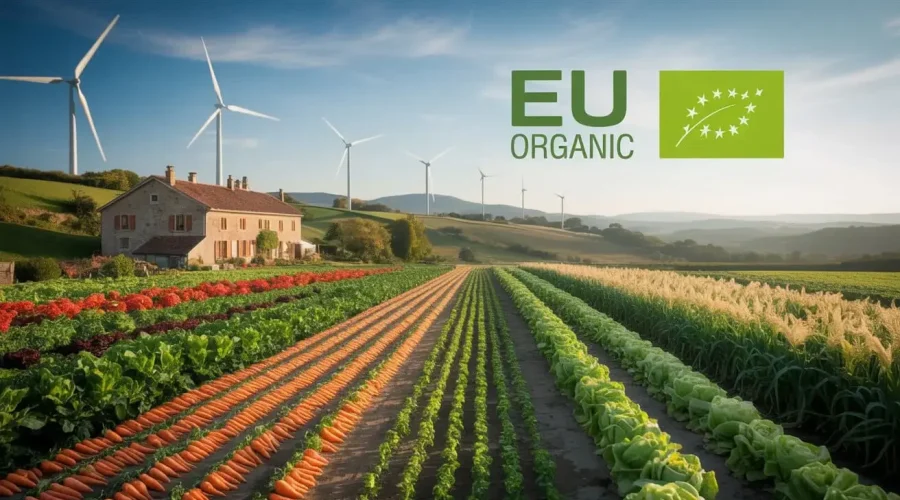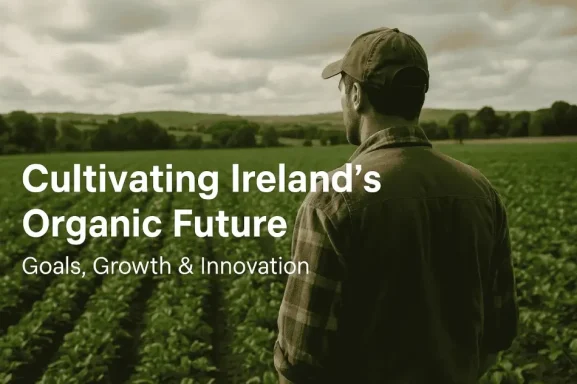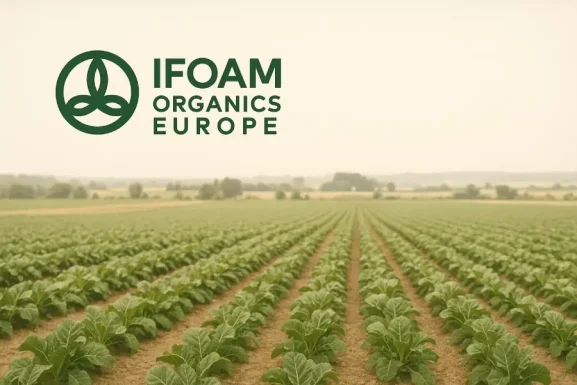Organic Production in the EU: Path to 2030
Organic production is no longer niche in Europe. The EU’s Action Plan for Organic Production (2021–2027) sets a clear target: 25% of farmland under organic practices by 2030, plus significant growth in organic aquaculture.
This plan anchors the European Green Deal, the Farm to Fork Strategy, and the Biodiversity Strategy. It connects farmer income, consumer trust, and environmental protection. For our mission—supporting sustainable, transparent organic businesses—this roadmap aligns perfectly.
Why Organic Matters
- Biodiversity: Organic farms host about 30% more biodiversity than conventional farms.
- Climate resilience: Soil health improves through natural cycles, making farms more resistant to extreme weather.
- Trust: The EU organic logo ensures no GMOs, limited pesticides, restricted antibiotics, and high welfare standards.
- Economics: Though yields are lower, organic products command higher prices, helping farmer incomes.
The growth is clear. Organic farmland grew 66% in a decade, reaching 13.8 million hectares in 2019. Retail sales doubled to €41 billion with Organic Production in EU.
Three Axes of the EU Organic Action Plan
Organic Food for All
Demand must rise for supply to expand. On average, Europeans spend €84 a year on organic food, but the range between countries is wide. Key actions:
- Promote the EU logo with campaigns and surveys.
- Organic in canteens and procurement: Copenhagen already serves 100% organic meals in public canteens; others are expected to follow.
- School schemes: More organic fruits, vegetables, and milk to shape healthy eating.
- Prevent fraud: Stronger digital tools and cross-border cooperation.
- Engage private sector: Supermarkets and caterers to commit to wider availability.
This demand-driven push makes organics more visible and accessible.
On the Way to 2030
Member States differ: some have under 1% farmland organic, others over 25%. To reach the EU-wide goal, the plan focuses on:
- Support via the CAP: Eco-schemes worth €38–58 billion will back organic practices.
- Training: Advisory services, demonstration farms, and curricula for students.
- Transparency: Reports on production, prices, and imports.
- Group certification: Small farms share costs and reduce red tape.
- Short supply chains: Investment in local processing and “bio-districts” linking farms with communities and tourism.
- Aquaculture: Support for research, breeding, and sustainability in organic fish farming.
This creates opportunity for small and medium farms while building resilient food networks.
Organics Leading by Example
The EU sees organics as the benchmark for sustainability. The plan adds:
- Climate action: Pilot networks of carbon-positive farms.
- Seeds and biodiversity: Funding for diverse, resilient plant varieties.
- Replacing inputs: Phasing out copper and testing safer alternatives.
- Animal welfare: Organic farming already leads, but further improvements in transport and slaughter are planned.
- Resource efficiency: Less plastic use, more recycling, and renewable energy adoption.
Metric
2010
2019
2030 Target
Organic farmland
8.3m ha
13.8m ha (8.5%)
25% of EU farmland
Retail sales
€18bn
€41bn
Rising with demand |
Biodiversity
+30% vs conventional
–
EU benchmark
Challenges Ahead
- Affordability: Organic food must become accessible to low-income families. VAT cuts and school schemes can help.
- Yield gap: Innovation and seed diversity are needed to raise productivity.
- Trust: Fraud or weak traceability risks consumer confidence.
- Unequal progress: Countries with low organic shares need stronger support.
Your role is key: connecting consumers to affordable, trusted organic options while supporting farmers.
What It Means
For farmers: financial support, lower certification costs, training, and stronger market access.
For consumers: more choice in schools, canteens, and shops, plus assurance of quality.
For society: reduced pesticide use, better animal welfare, and stronger biodiversity.
Frequently Asked Questions
The EU Action Plan 2021-2027 aims to get 25% of EU farmland under organic farming by 2030. It ties in with the European Green Deal, Farm to Fork, and Biodiversity Strategy to boost sustainability, income for farmers, and consumer trust.
Organic farms improve biodiversity by ~30% compared to conventional farms, improve soil health and climate resilience, limit GMO use, pesticide inputs, and enhance animal welfare while offering higher-price outlets for farmers.
Between 2010 and 2019 EU organic farmland rose from about 8.3 million ha to 13.8 million ha. Retail sales doubled in that period, from ~€18 billion to ~€41 billion.
1. Organic Food for All — raising demand via public procurement, school schemes, visibility, fraud prevention.
2. On the Way to 2030 — using CAP funding, training, group certification, short supply chains.
3. Organics Leading by Example — improving climate action, seed/biodiversity, reducing harmful inputs, better animal welfare.
- Yield gaps & need for innovation and seed diversity
- Affordability for low-income families; access to organic food
l- Unequal progress among Member States (some under 1%, others over 25%)
- Trust issues: fraud, weak traceability
localorganic.ie


